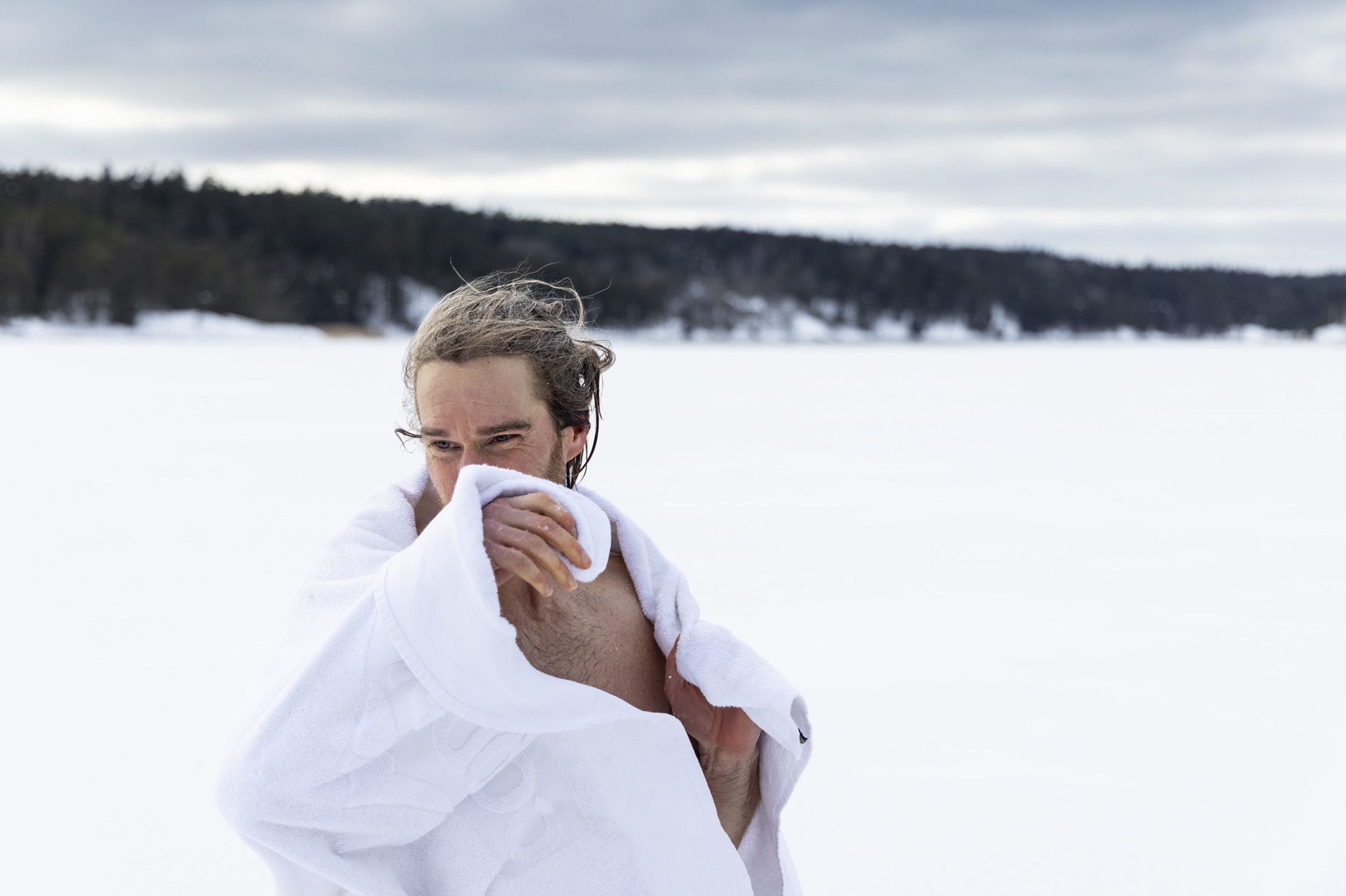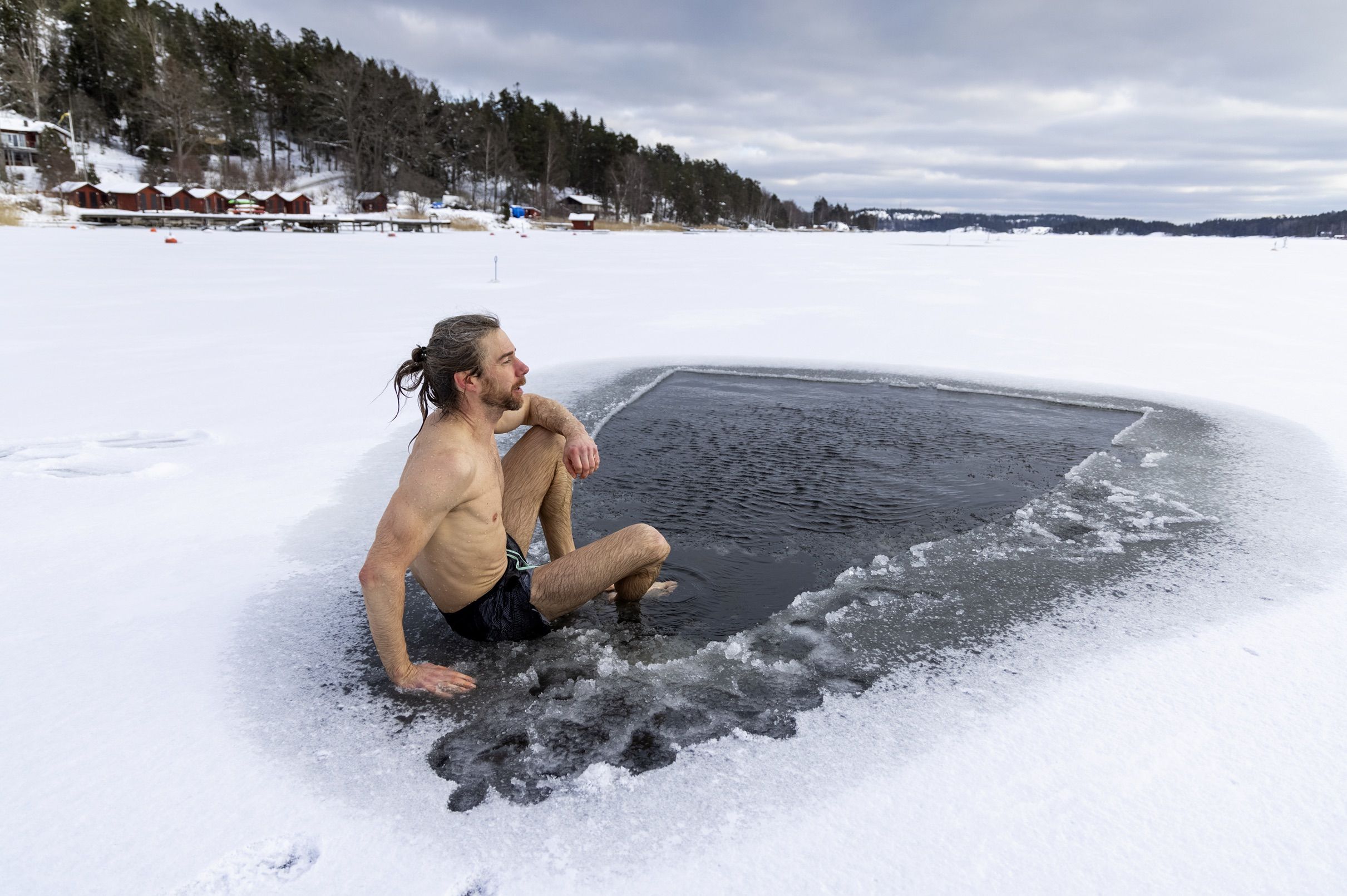Hot trend with cold baths
Cold baths have become quite the trend recently and are now a popular part of bathing rituals in Sweden and the rest of the world. The Archipelago Foundation provides lots of places where you can take a cold plunge at all times of the year. So... let’s dive deep into this hot bathing trend .
Winter bathing has always been considered a strengthening and character-building ritual. Not just in the northern parts of the world, but also in the southern hemisphere. Innuits have been enjoying cold baths as energizing rituals for a long time and the Chinese, Romans and Egyptians all believe that cold water has health benefits. Hippocrates wrote that “warm water may be relaxing, but only cold water is stimulating”. During the 18th century England was the leading country in cold baths in the western world. The use of cold water and the added cleansing benefits later became a trend in the rest of Europe. In the end of the 19th century Swedes started to become interested in cold baths.
In Saltsjöbaden in Stockholm, the first cold bathing house was built in 1895, and in Nynäshamn the ocean bath house Nynäs Havsbad was built in 1903. The tradition has since then lived on, and winter bathing, often combined with a sauna, has had a lot of fans throughout the years. But then something happened about 10 years ago. People started winter bathing like never before. In Stockholm cold baths during the winter have been on the rise lately. Mikael Rödin, for example, is into his third season as a winter bather this year, but he has been enjoying cold baths long before that, such as in glacier lakes in the Alps.
– I have done a lot of running in the Alps and often there are no showers in the cabins where you stay the night, so you have to bathe in a stream or lake, and those are often cold. Then you discover that it is really refreshing to dip your legs in a lake filled with pieces of ice.
It just makes you feel good
As more and more people started cold bathing there was a rising interest in the health benefits of cold baths. Several scientific studies have shown that cold baths can be really good for you. And, also, it just makes you feel good. A frequently quoted study is Pirkko Huttunen’s ”Winter swimming improves general well-being” (Uleåborg universitet, Finland) published in 2004. According to Huttunen and her colleagues, frequent winter baths, for both regulars and beginners, for four months (the time period of the study), improved the health of the study group compared to a non-bathing control group. There were health benefits such as decreased muscle tension, less fatigue, improved memory and less infections. The study participants felt healthier, had more energy and improved their self-confidence. People with rheumatoid arthritis and those suffering from asthma experienced an improvement in symptoms.
Yes, there is a lot of talk about those things. I don’t know what is evidence based though, but it really doesn’t matter to me. Cold baths just make me feel good. You feel cleansed and healthy both on the inside and outside. It is also a cool thing to stand in the middle of a frozen lake and strip down to your bathing suit, I mean it really IS super cold. And then when you get into the water it is even colder. But then when you get up it is not as cold anymore.
– Your blood vessels constrict as you enter the cold water, and when you get out, the blood starts pumping again and you feel warmer. Then you just put your clothes on and keep moving to stay warm. It is a great experience, says Mikael Rödin.

A rush of endorphins
The body interprets a cold bath as an acute stress situation. The blood vessels constrict, the heart rate and blood pressure increase and many people experience a heightened sense of being present. The stress reaction also leads to the release of norepinephrine. This could be one of the reasons that mental patients used to be submerged in cold water back in the day, a method which is thankfully not used any more.
– Most people would never even consider voluntarily having an ice bath. But studies on rats and guinea pigs show that serotonin, noradrenalin and dopamine increase when they are exposed to cold environments. So maybe those claiming that a cold bath makes them feel good are not so far off. If you are subjected to the stress reaction of a cold bath many times, you get used to the chock of the cold temperature. Many winter bathers also say that as they get used to the cold, they also learn to appreciate the positive effects even more.
What many winter bathers say is the best thing about having a cold bath is the feeling afterwards when the endorphins, the body’s own morphine, rush to the brain. Endorphins are the same substances as those released during a runner’s high. One smart winter bather has calculated that 10 seconds of winter bathing releases the same amount of endorphins as 20 minutes of running. So, if you don’t want to go running but still enjoy the nice feeling afterwards, just jump into some cold water!

Can everyone have cold baths?
Well, generally speaking, yes. But start carefully and slowly if you have never done it before. Don’t submerge your head if you are not used to it. If you have constantly high blood pressure or suffer from a heart disease you should consult your doctor first. Alcohol and some medications should not be used during cold baths. Many winter bathers use slippers to walk to the water. The hands also easily become cold, so neoprene gloves are quite popular. Proper breathing is very important when you winter bathe – deep and slow breaths, not shallow and fast. Bring warm clothes that you can put on easily, such as a wool base layer, a fleece top, a down jacket, a hat, gloves and warm boots. Having a hot drink really puts a cherry on the experience. And keep moving, it is the best way to get warm again.